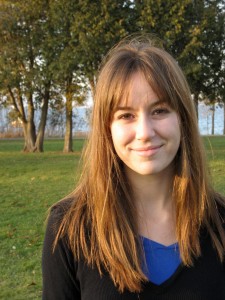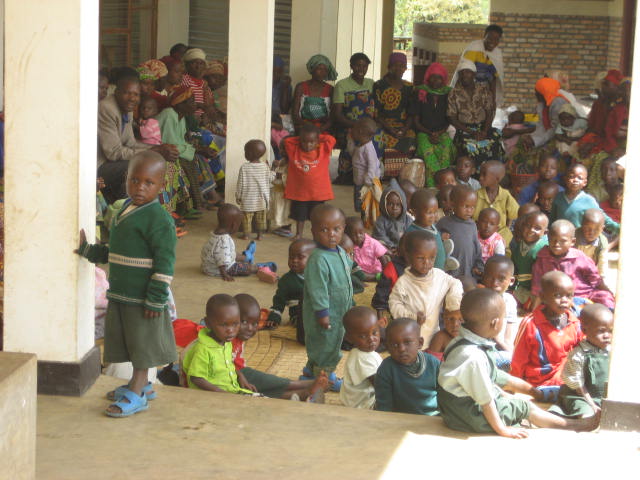Hi FES!
I’m writing after my first week in Rwanda, where I’ll be spending the summer—first as part of a study tour led by Amy Vedder (with Yufang Gao and Lily Sweikert), visiting conservation and development projects throughout the country, and then for a two month internship with the Wildlife Conservation Society in Nyungwe National Park. We started the week in the main city of Kigali, meeting with government officials in tourism development and conservation, and then traveled to Nyungwe. The park is spectacular—an island of forest, rich in biodiversity and endemic species, surrounded by a densely populated agricultural landscape. The poverty around the park is some of the most severe in the country, making the case for conservation here particularly difficult. There are many challenges, but I was impressed by the range of work taking place in Nyungwe—in our time here, we’ve seen efforts to develop and provide alternative livelihoods to people living around the park (we met, for example, with a local beekeepers’ cooperative and a cooperative of local men who are hired to restore burned sites within the park); we learned about tourism development and revenue sharing (5% of revenues from the country’s three national parks are earmarked for development projects in the communities around the parks); we observed a conservation education program in action; and we spoke with the chief park warden about anti-poaching efforts and ranger-based monitoring of threats to the forest (mainly, poaching, mining, and harvesting of trees for firewood).
 One day we took a fantastic afternoon hike from the visitor center in the heart of Nyungwe down the mountainside to the village of Banda, just outside the park boundary. As we descended the trail, we saw a crowned eagle soaring in the thermals out over the valley and, later, found an explosion of brilliant feathers, electric blue and red, lying in a circle on the ground—the remains of a Turaco, a beautiful endemic bird that eagles are known to eat. (We also had an unexpected encounter with a group of chimpanzees, but I’ll save that for another post.)
One day we took a fantastic afternoon hike from the visitor center in the heart of Nyungwe down the mountainside to the village of Banda, just outside the park boundary. As we descended the trail, we saw a crowned eagle soaring in the thermals out over the valley and, later, found an explosion of brilliant feathers, electric blue and red, lying in a circle on the ground—the remains of a Turaco, a beautiful endemic bird that eagles are known to eat. (We also had an unexpected encounter with a group of chimpanzees, but I’ll save that for another post.)
After several hours, we walked out of the forest and into the outskirts of the village. We found ourselves on a reddish dirt road, surrounded by small cultivated fields planted with banana trees, cassava, and beans trained up thin poles. Banda is a remote village of 12,000 without paved roads or electricity. The deeply rutted dirt roads that come down from the park make it hard to reach by car, and it doesn’t see many tourists. The houses are small rectangles with mud-brick walls and clay-tiled roofs (though some of the wealthier villagers use tin) scattered in the fields.
We spent the night in Banda, in a little six-room guesthouse. Around six the next morning, we woke to the soft sound of hymns sung in Kinyarwanda—it was Saturday morning, and a local protestant congregation was practicing for Sunday’s service down the hill. It was beautiful. After breakfast, we spent several hours touring the activities of a development project called Kageno. We came away hugely impressed by their enthusiasm, creativity, and extraordinary effort in trying to improve the lives of the people in Banda. They run a pre-school, an environmental education program (focused on the benefits of Nyungwe, including its role as a water catchment for the region, and in preventing soil erosion), a health clinic (where they provide basic health services as well as family planning), a community garden (with eggplant, strawberries, pineapple, beans, medicinal plants, etc.), and a meals program for the poorest, most malnourished kids. They’re also raising rabbits, which they hope to be able to distribute to the residents of Banda as an alternative (and self-reproducing) protein, though they’re having trouble keeping the baby rabbits alive in the cold climate.

Kageno is harvesting several forms of alternative energy to power the project and parts of the village: small-scale hydropower, biodiesel from cow dung, and briquettes created out of sawdust, discarded paper pulp and clay. The micro-hydro (from streams cascading down from the forest) powers little charging stations where, for 20 cents, villagers can charge their cell phones. Everything seems thoughtfully designed. They invite the mothers of malnourished children to help prepare the meals they serve, so that they can learn how to cook (and grow) nutritious food. Several were there when we visited, tending a huge bubbling pot of beans and cooked greens, powered by the sawdust briquettes. This meal was then served to a group of 60 children, each given a plate heaped with food (the full meals are given twice a week, though porridge is served every day). And though it’s funded by a wealthy New York orthodontist, it’s run by Rwandans; Jeremiah, one of the project leaders who is a trained nurse and runs the clinic, is from Banda. He’s young, expressive, and full of enthusiasm about everything they’re doing. Above all, he’s optimistic: He says the village is changing fast and for the better, though there’s still so much to be done.
Tess Croner and Alex Zakaras